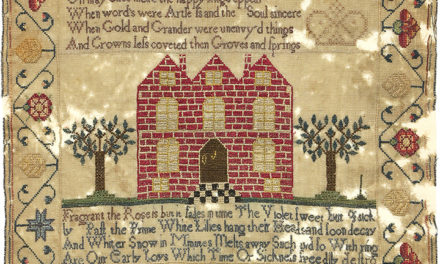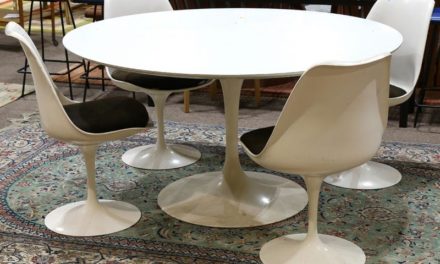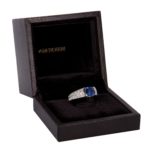 “I just want to know……
“I just want to know……
what’s it worth??”
It isn’t what people typically want to hear, but there isn’t one correct answer, so I have to answer that question with another one:
What is the purpose of the evaluation?
The tricky thing about jewelry appraisal is that different situations require different methods of determining value. This is one reason why you may end up with vastly different estimates for the same item. Let’s walk through the different situations to gain a better understanding of the different types and purposes of values.
The reality is that several values can be applied to a single item and that value depends on the purpose of the evaluation. For example, if I want to keep my piece of jewelry, I need an Insurance/Retail Replacement Value, but if I want to sell it, I would need a Fair Market Value. Additionally, complicating the matter further, there are several different types of Fair Market values, each for different purposes.
Retail Replacement Value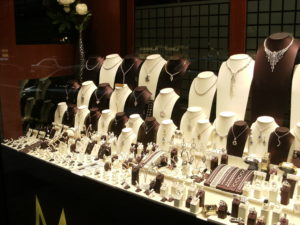
The act of acquiring
The highest possible value is the insurance or retail replacement value. It is based on the replacing with a “new” or “like” item in the retail market which includes brick and mortar jewelry stores, department stores, online stores, or anywhere a comparable item is being sold to the general public.
Fair Market Value
The act of relinquishing (deaccessioning, gifting, selling or donating)
Each one of these has a slightly different but still fair market value: liquidation, selling to a dealer, selling at auction, selling to a private individual, donating and gifting.
Naturally, everyone wants to get the most amount of money possible for their jewelry item. Unfortunately, this means most people expect to get the equivalent of the retail replacement value, which is never the case. Once an item has been purchased at retail, that price can never be re-achieved unless (1) it has passed through several generations and (2) happens to be in favor in the secondary market. Often after being informed of the fair market value, many people think that they are being taken advantage of.
Scenario 1 – On T.V.
 Maybe you’ve seen the popular reality TV show “Pawn Stars.” I have witnessed people watching the show and when the retail value is stated, then the fair market value is offered…I’ve heard responses like
Maybe you’ve seen the popular reality TV show “Pawn Stars.” I have witnessed people watching the show and when the retail value is stated, then the fair market value is offered…I’ve heard responses like
Man, how do they get away with that? They were just told what it sells for. That’s a rip-off!
We’ve all also watched “Road Shows,” (most notably, the Antiques Roadshow in the U.S.) and you may have noticed that the experts sometimes give a few different values. These different values are mainly based on how you, as a client, answer one question:
Are you planning on selling this or is this something you are just curious about and want to keep?
If your answer is “I’m just curious,” most likely you will be given a value comparable to an item in the retail market, and the specialist might use terms like “gallery price” or “insurance value.” But, if your answer is “I would like to sell it,” then you’ll probably get an answer based on comparable items recently sold in the secondary market. This would be signified by statements like “another was sold at auction at” for “auction value.”
Scenario 2 – At the Jewelry Store
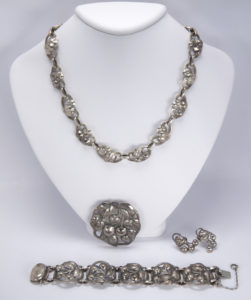 Unfortunately, and more often than I would like, I hear,
Unfortunately, and more often than I would like, I hear,
But my jeweler told me it was worth ‘x’ amount of dollars.
A lot of jewelers are not appraisers and a lot of jewelers are not gemologists. Too often in a jewelry store, the question of how much a piece you have may be worth comes up and the jeweler will give you a value without even handling the item or asking if you wanted to sell it. They may then provide a retail value of something comparable in their case to the one you have. If you find yourself in this situation, your next question should be,
How much will you pay me for this?
I guarantee you their answer will be very different. They will either refuse to buy it or lower the original number they gave you to a fair market value.
The reality is that an individual can never sell an item for retail replacement value. This value is used by insurance companies to establish insurance coverage in the event that they need to replace the item, in the event of loss or damage.
Now……
Where to sell
In today’s current market, the internet has played a large part in forever changing what was, for a long time, the selling sequence in the industry. Now, any seller with the help of the internet, with sites like eBay, can try to sell to potential buyers across the world. When considering relinquishing your jewelry, your options are auction, consignment, dealer, or eBay, and depending on your time frame and location your options will vary. They all have different percentages that are taken after the sale and the best thing to do is to shop around. Your decision should be based on exposure; where your item will get the best showing and reach the most private buyers, who are the highest paying end user. Keep in mind, if you decide to list your item yourself, it will require your knowledge and ethics to properly represent it and then back it after purchase.
 Consignment at a storefront or online platform requires time. If you don’t have time then a dealer/buyer will give you a purchase price for that moment. Auction combines the best of both of these options. There is a definite date for the sale and your piece will be seen by dealers and private buyers alike, which can increase the ultimate price due to the competitive bidding process.
Consignment at a storefront or online platform requires time. If you don’t have time then a dealer/buyer will give you a purchase price for that moment. Auction combines the best of both of these options. There is a definite date for the sale and your piece will be seen by dealers and private buyers alike, which can increase the ultimate price due to the competitive bidding process.
There is the perception that jewelry is an investment and therefore the value will increase. However, you have to remember that generally when an item is purchased in a retail setting, on the day it is purchased it is worth more than it ever will be again. From the date of purchase on, when considering relinquishing it, it will automatically be sold in the secondary market. This relationship to the secondary market is the same for all kinds of consumer goods – clothing, furniture, cars, etc. In general, jewelry should be purchased because you love it, or because you want to enjoy seeing someone you love wearing it. I know it can be frustrating to hear something will sell for less than what you thought. I hope reading about how one item can have many different values depending on it’s purpose, has been helpful, and regardless of value, we want you to know that we will be your partners in the process.
In general, jewelry should be purchased because you love it, or because you want to enjoy seeing someone you love wearing it. I know it can be frustrating to hear something will sell for less than what you thought. I hope reading about how one item can have many different values depending on it’s purpose, has been helpful, and regardless of value, we want you to know that we will be your partners in the process.


